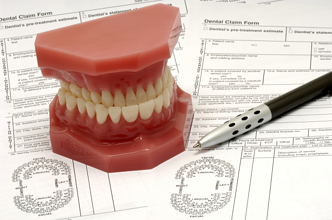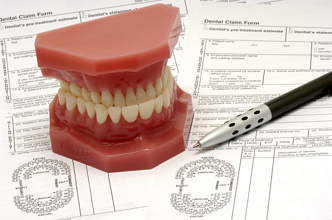Dental Insurance for Dummies


When your medical or dental insurance sends you an explanation of benefits (EOB) in the mail, do you throw it unopened on a pile of paperwork that includes the deferment paperwork for your student loans from 1962? Or are you thinking "What the heck is an explanation of benefits?" If you do open it, does it hit you like a Rorschach Inkblot test? You think there is something important you are supposed to be able to see, but you can't quite figure it out. When you ask your HR person at work to explain the basics of the group dental plan does he or she say "It covers some stuff" or "We have a group dental plan?"
 Compared to your medical plan, your group dental plan is a cinch. Here is what you need to know:
Compared to your medical plan, your group dental plan is a cinch. Here is what you need to know:
1) Deductible - Typically $25 or $50. This is applied and paid by you when you have your first appointment for dental treatment like a filling or crown. Most plans do not apply this deductible toward your exams and cleanings, therefore no money is due from you during these types of appointments.
2) An annual maximum benefit - This is typically $1000.00 - $1500.00. Most plans are calendar year. When the insurance has paid benefits up to this amount you are cut off until next plan year. On January 1st of the next year your maximum is available to you again.
3) The annual maximum benefit is paid out in percentages depending on the type of service you have at the dentist. Typically:
Type 1 services (Preventative) 100% coverage - exams, x-rays and cleanings, fluoride and sealants for kids up to a certain age.
Type 2 services (Basic restorative) 80% coverage - fillings, root canals, extractions, periodontal scaling and root planning (deep cleanings).
Type 3 services ( Major restorative) 50% coverage - crowns, build ups, posts, dentures, bridge work.
So know you know the basics! Easy right? That's what Mrs. Hellgren said back in '75 in grammar class. Then she uttered the mind wrenching word "Exceptions". "I before E except after C" The hell had begun. (Is that an incomplete sentence?) Anyway....
The biggest pit falls to look for in your group plan are the following "exceptions":
WAITING PERIODS: Woops! You have to wait 6 months from your effective date on the group dental plan for Type 2 services to be covered!
MISSING TOOTH CLAUSE: If the tooth was missing prior to your effective date with the group plan, too bad. They are not going to pay to replace it with a bridge or implant.
FREQUENCYS: The group plan allows certain services at certain intervals. Cleanings every 6 month plus 1 day. (I'm not kidding, have your cleaning 1 day too soon and you insurance won’t cover it.) Full sets of x-rays are usually limited to every 3-5 years. That means if you switch dentists you want to have those x-rays sent over before you arrive.
Now that you know the basics, how do your maximize your benefits? Most importantly, GO TO YOUR DENTIST! "Use it or lose it!" I guess what I am trying to say is that your group plan is like someone saying they will pay a percentage of your bar tab. How often does that happen? So find out what your plan covers and use it to the maximum. Insurance companies love it when you pay your premium and then NOONE uses the insurance! I love dental insurance. It facilitates oral health and helps people who could absolutely NOT afford a check up and cleaning, get one for free!
Make sure you go to a dentist who is actually CONTRACTED with your group plans insurance company. They are contracted to only charge you the agreed upon fee schedule and collect only your portion for covered services.
Another cool feature is that your friendly dental receptionist can send a PRE-TREATMENT Estimate to your plan for the work you need. The insurance company knows it is for work that MAY be performed, but has not yet been done. That way you see ahead of time exactly how much they will pay.
An experienced dental receptionist will have knowledge of these basics and be able to give you a pretty accurate estimate before the treatment is performed.
In review: Maximums, deductibles, percentages, bring chocolates to your dental receptionist, and watch for exceptions!


